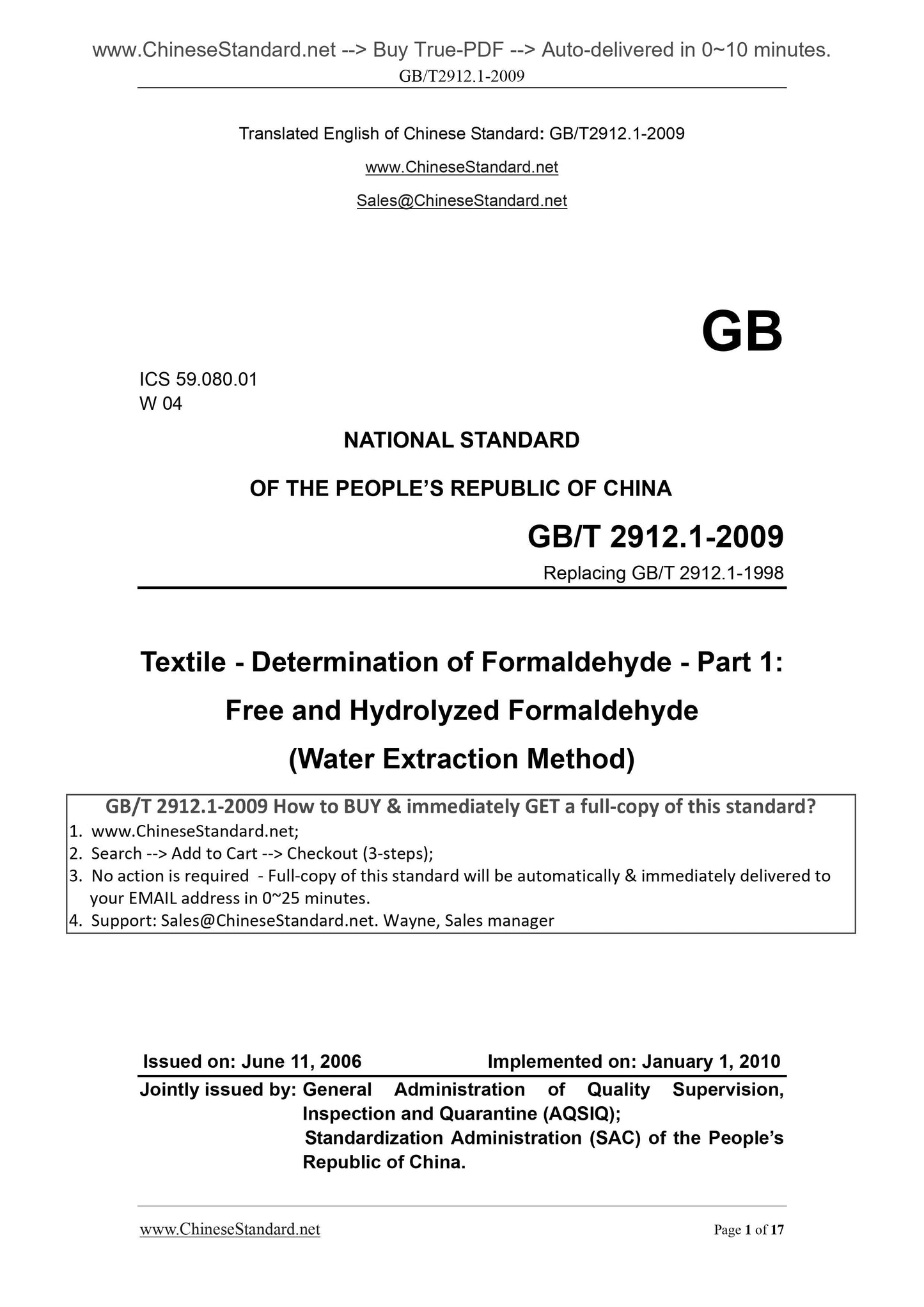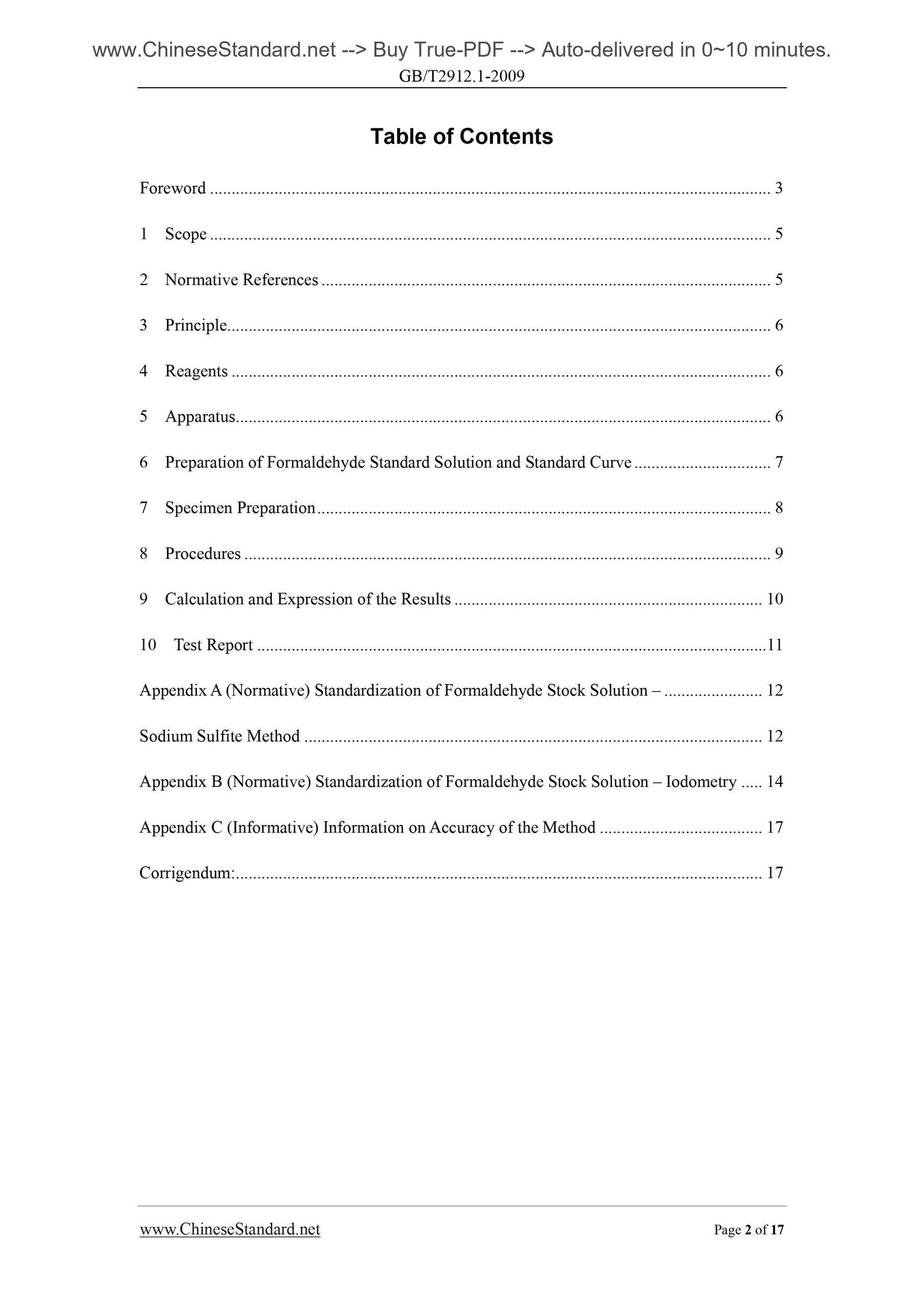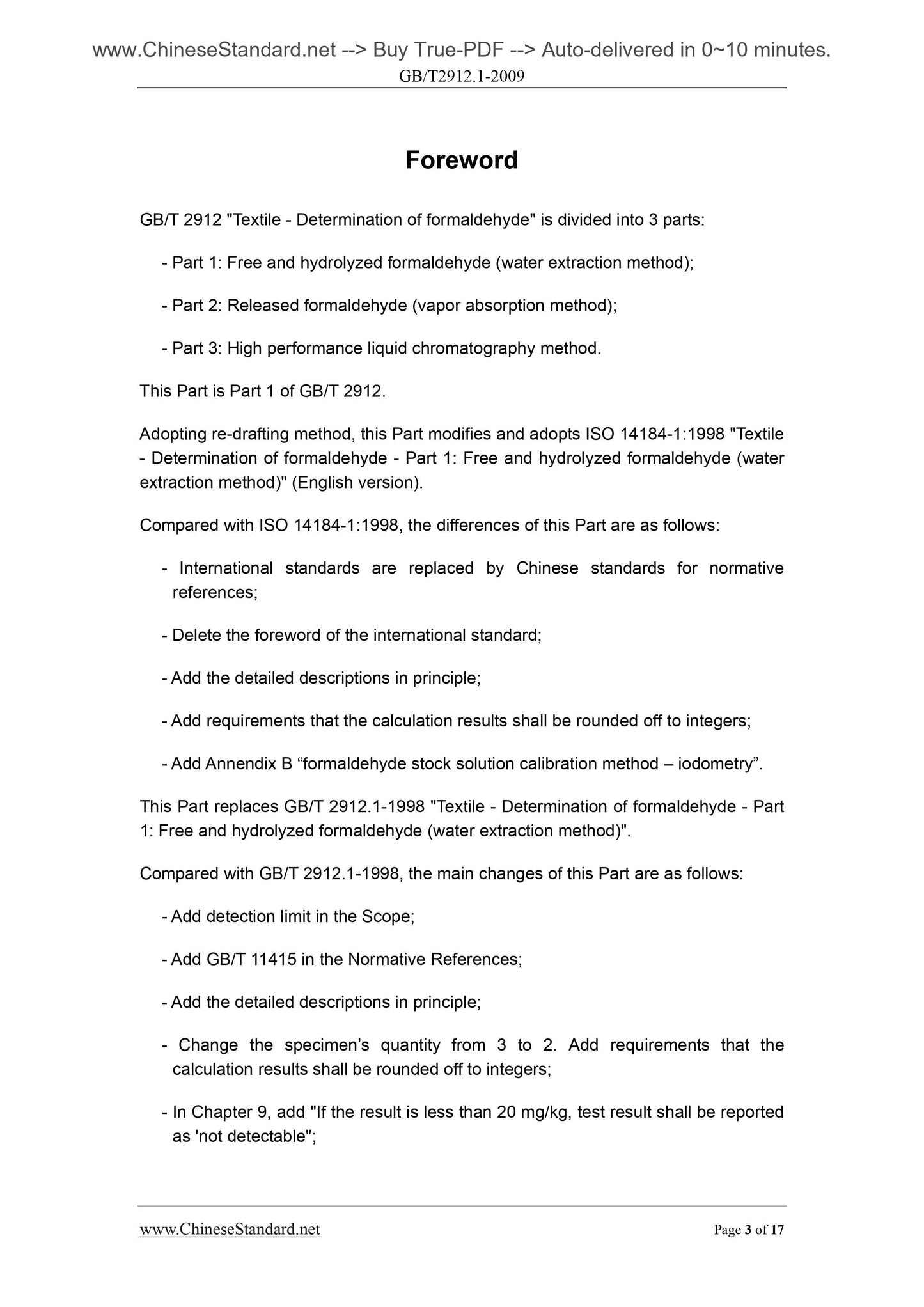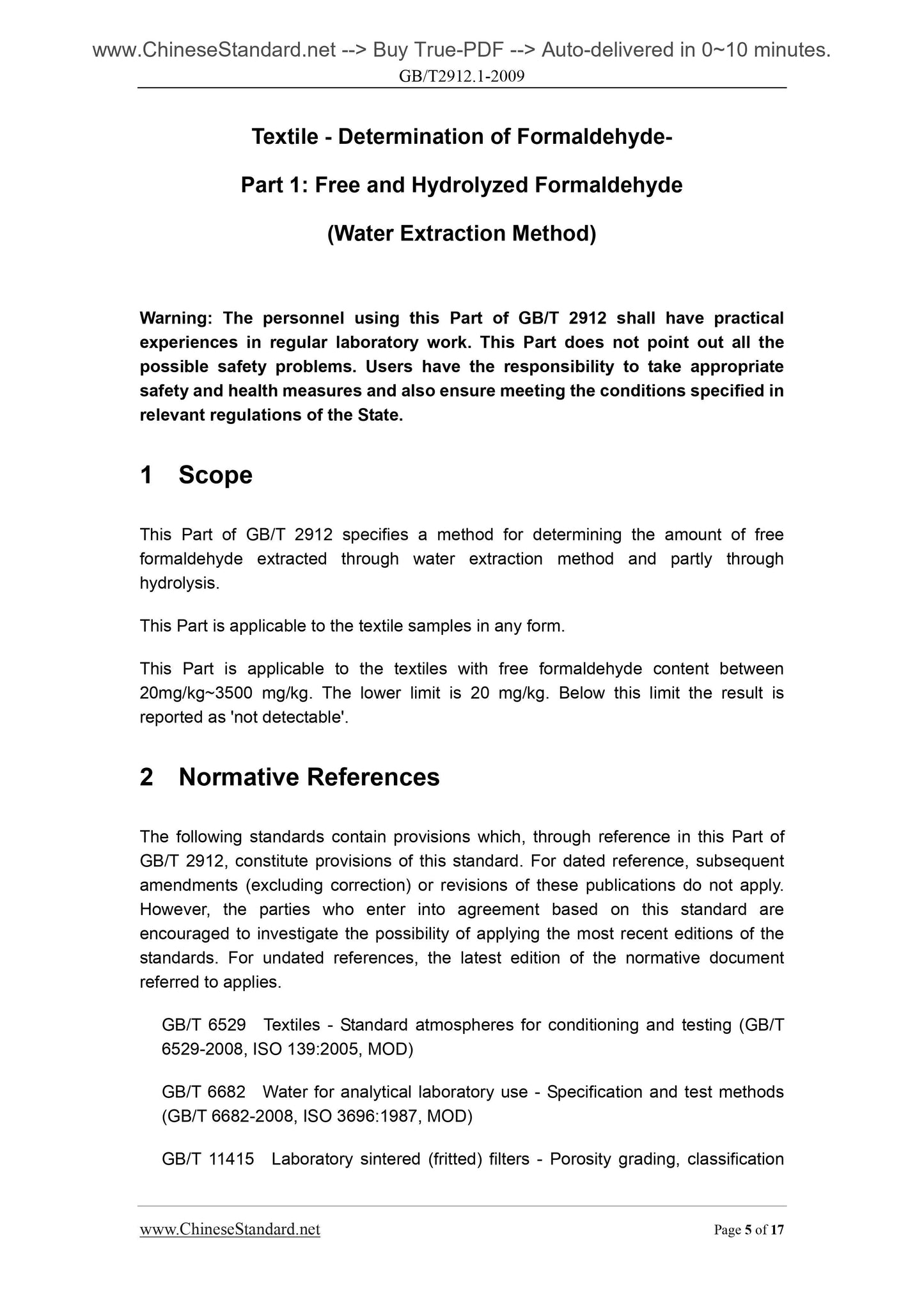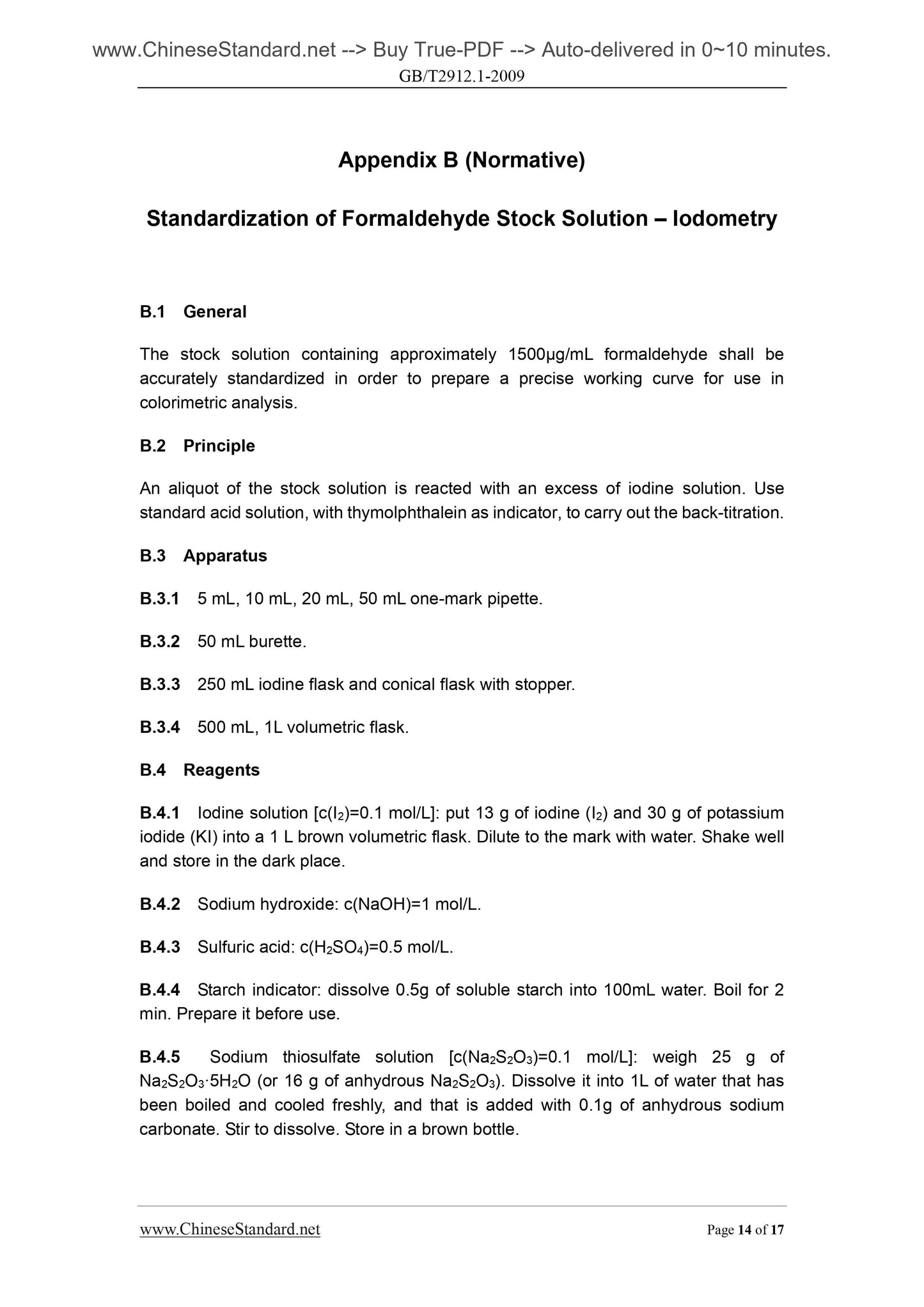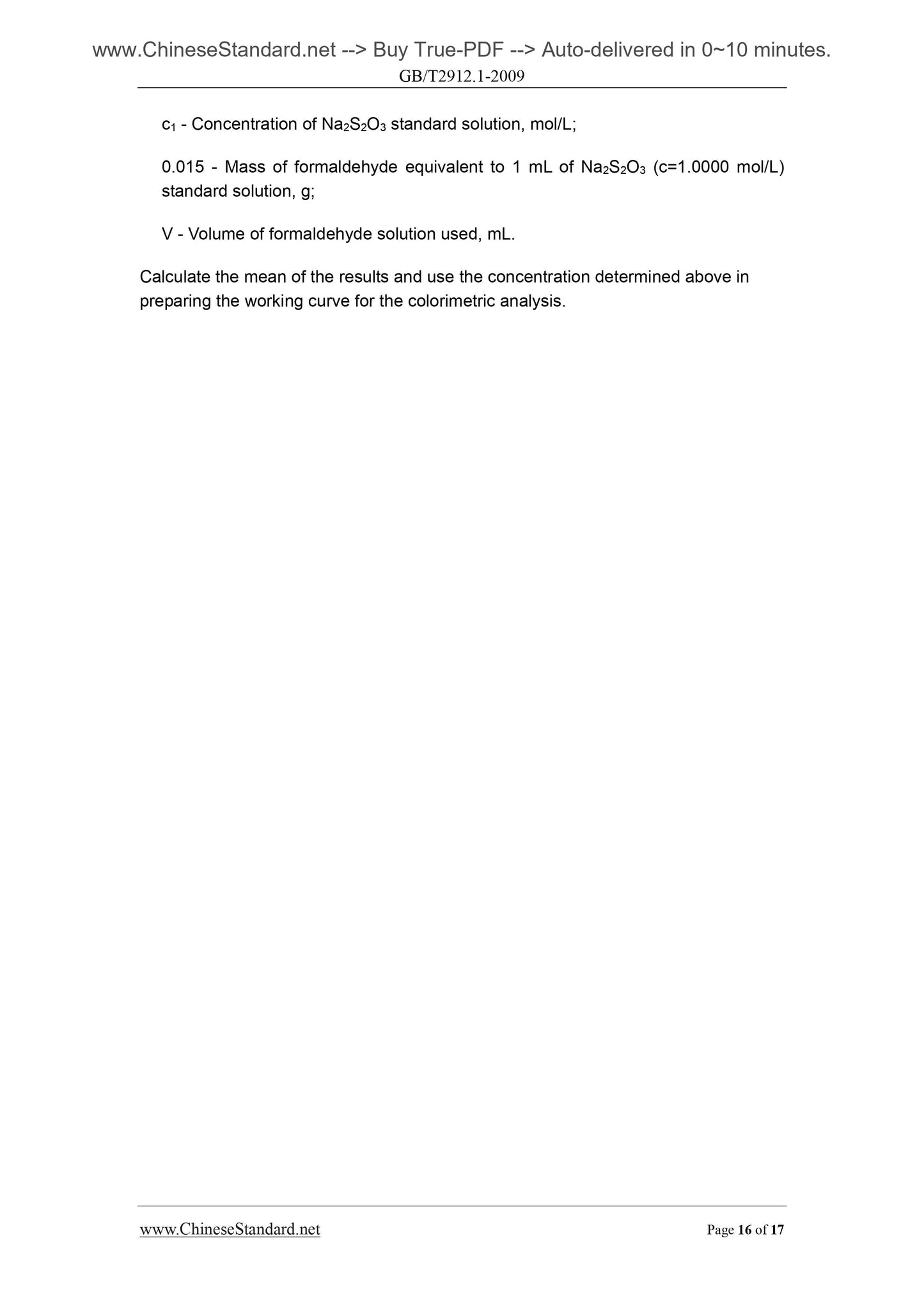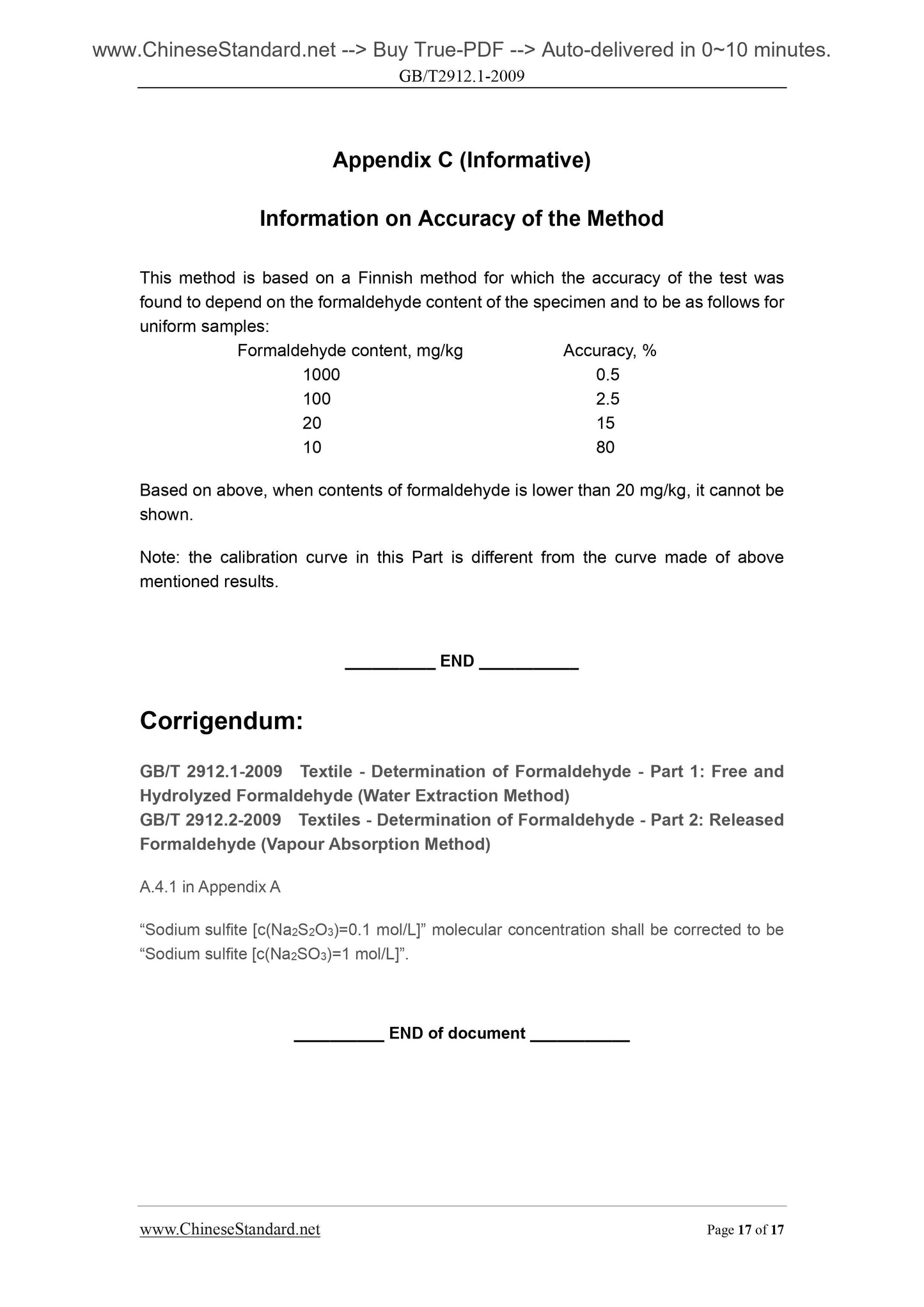1
/
of
7
www.ChineseStandard.us -- Field Test Asia Pte. Ltd.
GB/T 2912.1-2009 English PDF (GB/T2912.1-2009)
GB/T 2912.1-2009 English PDF (GB/T2912.1-2009)
Regular price
$85.00
Regular price
Sale price
$85.00
Unit price
/
per
Shipping calculated at checkout.
Couldn't load pickup availability
GB/T 2912.1-2009: Textiles -- Determination of formaldehyde -- Part 1: Free and hydrolyzed formaldehyde (water extraction method)
Delivery: 9 seconds. Download (and Email) true-PDF + Invoice.Get Quotation: Click GB/T 2912.1-2009 (Self-service in 1-minute)
Newer / historical versions: GB/T 2912.1-2009
Preview True-PDF
Scope
This Part of GB/T 2912 specifies a method for determining the amount of freeformaldehyde extracted through water extraction method and partly through
hydrolysis.
Basic Data
| Standard ID | GB/T 2912.1-2009 (GB/T2912.1-2009) |
| Description (Translated English) | Textiles -- Determination of formaldehyde -- Part 1: Free and hydrolyzed formaldehyde (water extraction method) |
| Sector / Industry | National Standard (Recommended) |
| Classification of Chinese Standard | W04 |
| Classification of International Standard | 59.080.01 |
| Word Count Estimation | 21,260 |
| Date of Issue | 2009-06-11 |
| Date of Implementation | 2010-01-01 |
| Older Standard (superseded by this standard) | GB/T 2912.1-1998 |
| Quoted Standard | GB/T 6529; GB/T 6682; GB/T 11415 |
| Adopted Standard | ISO 14184-1-1998, MOD |
| Regulation (derived from) | National Standard Approval Announcement 2009 No.9 (Total No.149) |
| Issuing agency(ies) | General Administration of Quality Supervision, Inspection and Quarantine of the People's Republic of China, Standardization Administration of the People's Republic of China |
| Summary | This standard specifies the determination of partially hydrolyzed by water extraction and the role of free formaldehyde content. This section applies to any form of textiles. |
Share
